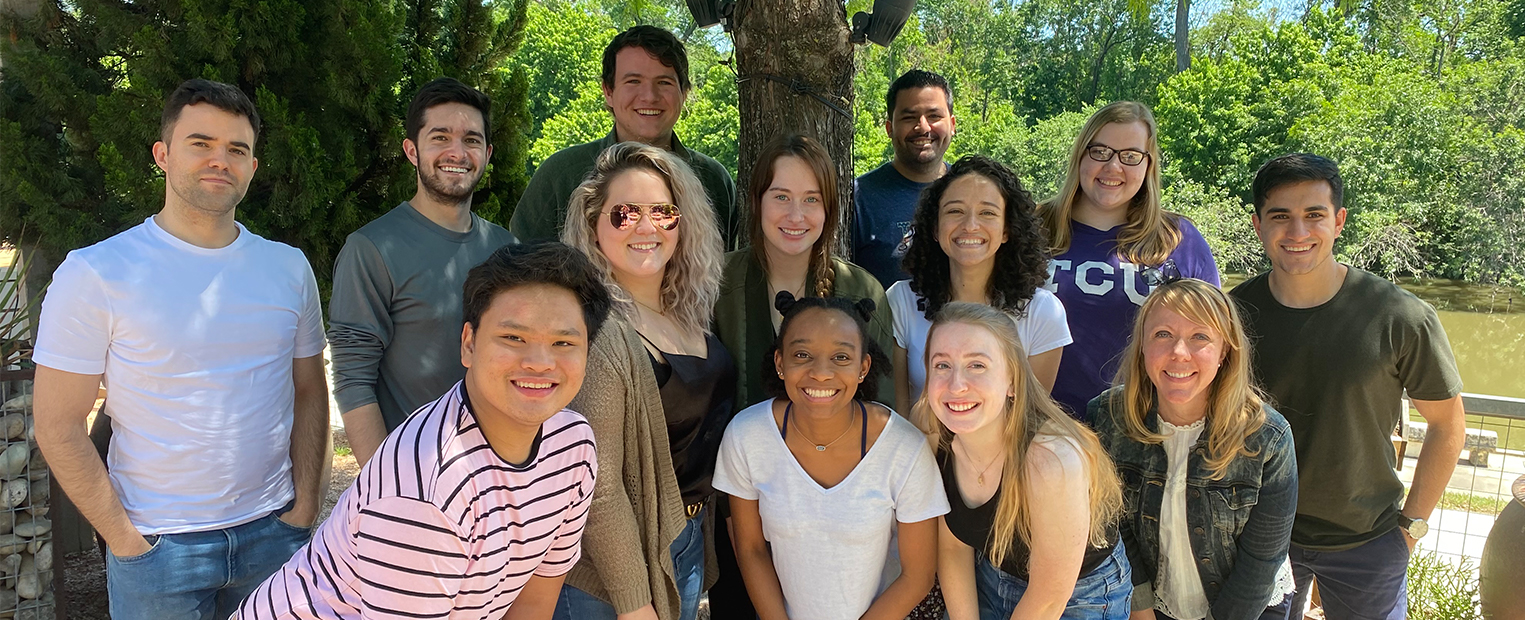According to the National Institute on Aging, more than 6 million Americans have dementia caused by Alzheimer’s disease. It’s ranked as the sixth leading cause of death in the U.S. As Alzheimer’s Awareness Month comes to a close, let’s reflect on some of the milestones reached this year in respect to the treatment of this cognitive disease. Science is not only focused on treating Alzheimer’s, but also developing a vaccination against the disease before symptoms appear. In the last few months, the first human trial for an intranasal vaccine for Alzheimer’s was announced. Kayla Green, associate professor in the department of chemistry and biochemistry at TCU, conducts research that could lead to a greater understanding and treatment of Alzheimer’s. She answers questions about recent scientific breakthroughs.
Do you think we’ll find a cure for Alzheimer’s disease in our lifetime?
I am hopeful researchers will make significant progress towards finding a treatment to slow or halt the progression of the disease. The brain and diseases within it are still not well understood. What is becoming clear is that an array of factors can cause Alzheimer’s disease, and that makes treating it a real challenge. Coupled with new methods for early detection and advances in understanding what factors can cause the disease, researchers are now in a more advantageous position to make some serious advances.
Why is early diagnosis of neurodegenerative diseases important?
Patients with this particular disease often do not begin to display symptoms until the disease has progressed to a point in which damage to the brain is irreversible. We now realize that many studies to date failed before they even started because the patients tested were heavily symptomatic and could not expect reversal of the damage done. It is only just recently that imaging methods have been developed to identify patients in the early stages of the disease. It is critical to find a test pool that can be treatable, which is a major aspect for the design of the current study of the intranasal vaccine.
What specific research are you preforming to develop treatment for Alzheimer’s and other neurodegenerative diseases?
The Green Team uses lessons from nature and biochemistry to design molecules to specifically target pathways that lead to the oxidative stress, a known contributor to Alzheimer’s disease amongst other diseases. We then use organic chemistry to make these molecules, which is the most time-consuming component of our work. Inorganic and physical chemistry methods are used to evaluate the initial success of design with respect to halting mechanisms that cause oxidative stress. At this point, we collaborate with several teams, including TCU Biology Chumley and Akkaraju labs, to evaluate the success of our molecules in cellular models. Concurrently, the molecules are tested for positive pharmacological behaviors including blood brain barrier permeability and metabolism behavior. Throughout this process, we are constantly refining our design based on the results. Our molecules are continually improving in design and functionality. It is truly remarkable to see the evolution of our molecules over the past decade.
How are biosensors utilized in detecting Alzheimer’s Disease?
A biosensor is a device that can detect molecules of interest in a biological system. For example, glucometers are well-known examples of biosensors. Although Alzheimer’s disease is thought to be a brain-based disease, there is some evidence that molecular markers for the disease could be detected in the blood, urine, tears, or saliva. It would be an exceptional advance if such a technology could be developed. Such a system could be incorporated into annual blood screens and used to take preventative actions that could help curb the disease progression if identified early. Again, early detection coupled with an effective treatment strategy will provide the best patient outcomes.
Are there any recent or predicted developments in your field related to Alzheimer’s of which you are particularly excited?
I did my post-doc at UTSW in the Advanced Imaging Research Center developing imaging agents, and it was very clear that analysis of the brain was a frontier that brought significant challenges compared to the rest of the body. The development of imaging methods for early detection have been a true and much needed breakthrough. One cannot expect good results from potential therapeutics without a good pool to test on. This is a game changer for those of us working on developing such drugs.
What are your thoughts about clinical trials for the intranasal vaccine intended to prevent and slow the progression of Alzheimer’s?
As I noted previously, I was excited to read that the team was very careful in selecting patients with imaging results that indicated they had early onset of the disease. We are entering into a new phase of discovery and this is, in my opinion, the significant change that gives researchers in this field a real opportunity to make breakthroughs. I’m keeping my fingers crossed that the brave test subjects experience positive outcomes.
Learn more about the Green Research Group.
